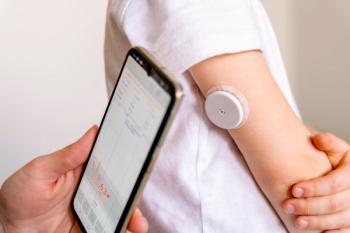
IVIG Effective in Treating Steroid-Resistant Autoimmune Bullous Dermatoses
The use of IVIG in the treatment of recalcitrant pemphigus vulgaris and foliaceus and bullous pemphigoid is supported by 2 clinical trials.
Intravenous immunoglobulin (IVIG) has proven effective in the treatment of autoimmune bullous dermatoses, according to a study published in Frontiers in Immunology.1 Though the treatment is typically used as an adjunct treatment, it can be especially efficacious in the treatment of steroid-resistant pemphigoid.2,3
Autoimmune bullous dermatoses, a group of antibody-mediated autoimmune diseases, manifest with bullae (fluid-filled lesions) and erosions on the skin and mucous membranes. Though the conditions are typically resolved through mild clinical courses, a certain subset of patients do not sufficiently respond to immunosuppressive and immunomodulatory treatment or succumb to fatal adverse effects.1 The use of IVIG in the treatment of recalcitrant pemphigus vulgaris and foliaceus and bullous pemphigoid is supported by 2 multicenter, randomized, placebo-controlled, double-blind trials, both of which concluded that IVIG is therapeutically beneficial in the treatment of pemphigus.2,3
The first of these 2 studies was conducted to investigate the therapeutic effect of a single cycle of high-dose IVIG in patients relatively resistant to systemic steroids. The investigators enrolled 61 patients with pemphigus vulgaris or pemphigus foliaceus who did not respond to prednisone. These individuals were split into 3 treatment arms, each receiving infusions over a period of 5 days: 1 group receiving 400 mg/kg/d of IVIG, 1 receiving 200 mg/kg/d, and a placebo control group. According to the results of the study, disease activity and enzyme-linked immunosorbent assay scores were significantly lower in the 400-mg group than the other 2 groups (P <.05 on day 43, P <.01 on day 85). The investigators also noted that they found no significant difference in safety between the 3 treatment groups.2
The second study was designed to investigate the benefits of utilizing 400 mg/kg/d of IVIG in the treatment of steroid-resistant bullous pemphigoid. Fifty-six patients were enrolled into the study, split between the group receiving IVIG and the placebo group. According to the investigators, the disease activity score on day 15 (DAS15) was 12.5 points lower in the IVIG group than in the placebo group (P =.089). Further, the mean DAS of the IVIG group was consistently lower than that of the placebo group over the course of observation.3
IVIG is typically used as a third-line adjunct treatment for pemphigus, initially combined with high-dose systemic corticosteroids and steroid-sparing immunosuppressants. Once the disease is controlled—defined as the healing of existing erosions and no new formation of blisters— immunosuppressive treatment is slowly reduced and, finally, IVIG intervals may be extended to 6 weeks followed by cessation of IVIG treatment.1
REFERENCES
- Hoffmann JHO, Enk AH. High-dose intravenous immunoglobulin in skin autoimmune disease. Front Immunol. 2019; 10: 1090. doi: 10.3389/fimmu.2019.01090
- Amagai M, Ikeda S, Shimizu H, et al. A randomized double-blind trial of intravenous immunoglobulin for pemphigus. J Am Acad Dermatol. 2009 Apr;60(4):595-603. doi: 10.1016/j.jaad.2008.09.052
- Amagai M, Ikeda S, Hashimoto T, et al. A randomized double-blind trial of intravenous immunoglobulin for bullous pemphigoid. J Dermatol Sci. 2017 Feb;85(2):77-84. doi: 10.1016/j.jdermsci.2016.11.003
Newsletter
Stay informed on drug updates, treatment guidelines, and pharmacy practice trends—subscribe to Pharmacy Times for weekly clinical insights.




















































































































































































































